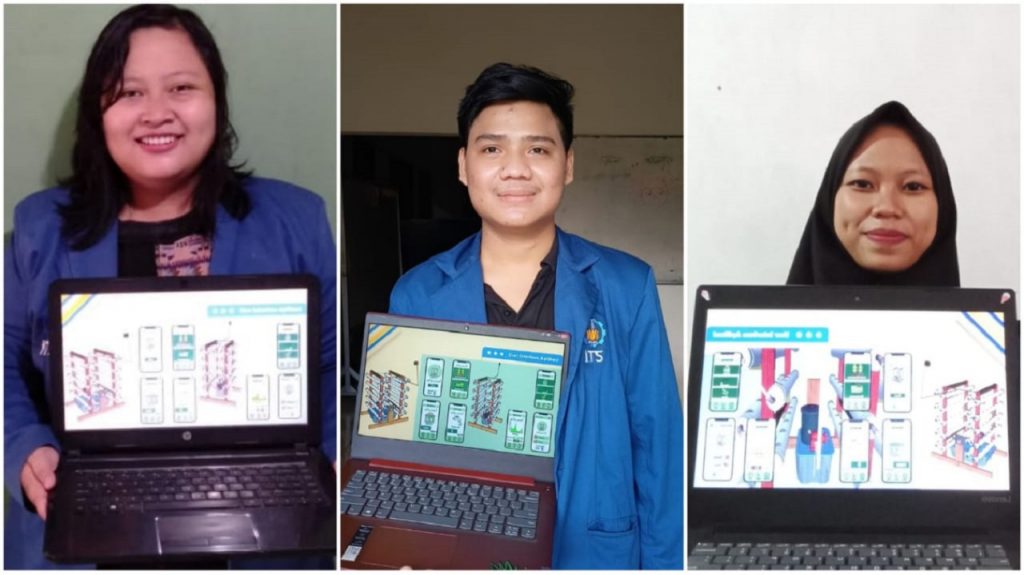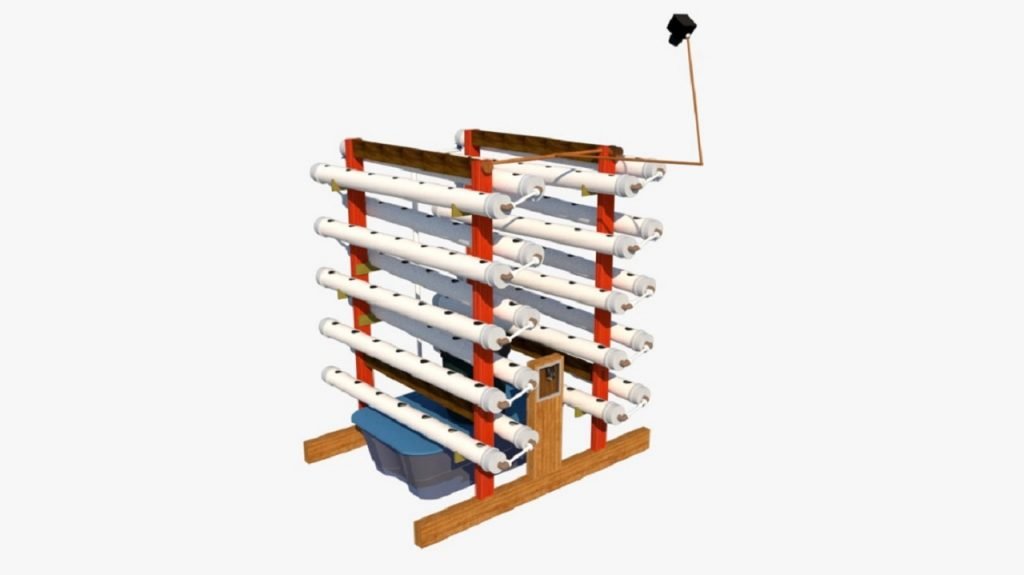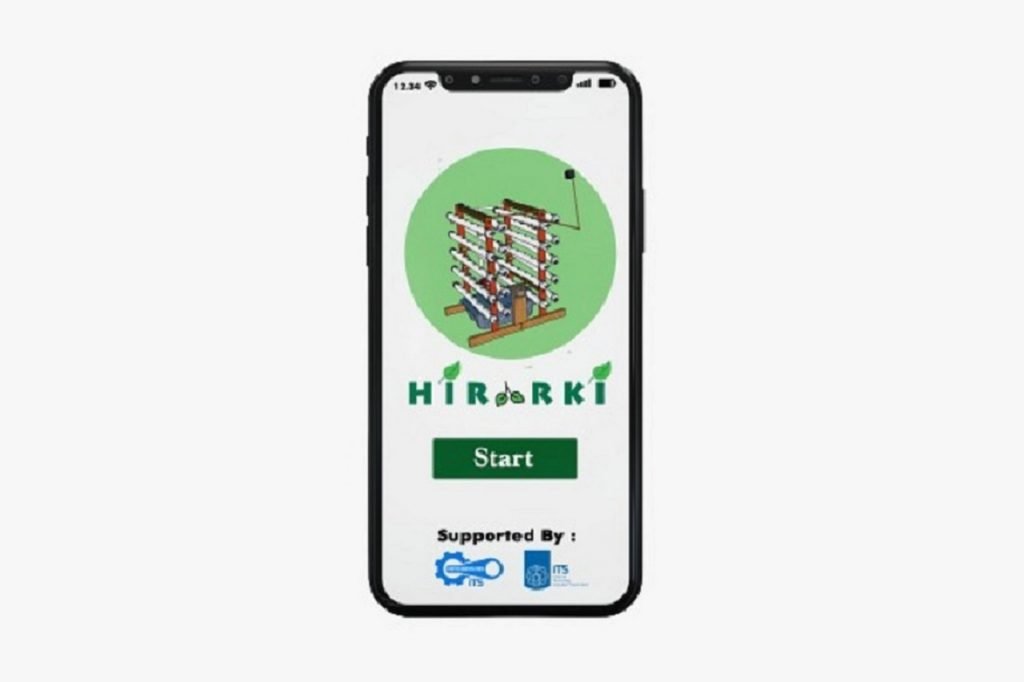ITS Students Create IoT Based Multipurpose Hydroponics

(from left) Dewi Sugiharti Ningrum, Mochamad Royan Nasrulloh, and Yeni Dwi Cahyani showing their HIRARKI designs
ITS Campus, ITS News – The hydroponic planting method which is now widely applied in urban areas is still widely used, limited to only one type of plant. Departing from these problems, the three students of the Instrumentation Engineering Department , Vocational Faculty, Institut Teknologi Sepuluh Nopember (ITS) created a multipurpose hydroponic tools based on the Internet of Things (IoT).
They are Dewi Sugiharti Ningrum, Yeni Dwi Cahyani, and Mochamad Royan Nasrulloh. According to Dewi Sugiharti Ningrum, the team leader, this team’s hydroponics design is different from the current one because The community can apply it to all types of plants. Besides that, his hydroponics is also equipped with IoT technology. “So we named our design hydroponics with the title HIRARKI,” she said.
Furthermore, this student, born in 2000, said, HIRARKI is an acronym for Multipurpose Hydroponics Based on the Internet of Things. It is versatile because this hydroponics can automatically adjust nutrition and water discharge for various kinds of plants. “This is because HIRARKI has a database system related to nutrients and plant water discharge,” she explained.
Dewi continued, HIRARKI is also equipped with several automatic elements such as a water pump with a servo motor as an actuator (a mechanical device to control the system, red). Besides, there is also an Arduino Uno which functions as a controller. “The work system of these elements is more about action when it is not by the predetermined hydroponic targets,” explained this 2018 class student.
Dewi added that Their team also installed the hydroponics she made with a TDS meter sensor and an FS300a flowmeter. The TDS sensor itself is used to measure the nutrients contained in water in the form of ppm, while the FS300a flowmeter functions to detect the flow rate of water being pumped into hydroponics so that the process of providing nutrients and water to plants in HIRARKI is carried out automatically.

HIRARKI Design, multipurpose hydroponics made by ITS Instrumentation Engineering students
Not only that, but HIRARKI also has an application to control the system, which is carried out with several features in it. There are four main features: plant selection, nutrition monitoring, flow rate monitoring, and pest detection monitoring. “With just one click, we can monitor the plants we plant in HIRARKI,” she added.
In the later application system, users will be able to choose what plants to plant. When you have selected a plant, the actuator on HIRARKI will automatically adjust the nutrition and water flow according to the selected plant’s database. The success rate of growing a plant will be greater with the provision of proper nutrition and water.
When asked about the advantages of HIRARKI, this alumnus of SMAN 5 Surabaya said that his hydroponics has advantages over other hydroponics, namely one tool for all types of plants. Because with HIRARKI, all plants can be automated by the system in providing nutrients and water.
Also, the presence of a pest detection monitoring feature can minimize dead plants with early warning. “This system will notify you if there are more than 10 percent of pests attacking plants in hydroponics,” said the student who was born in Surabaya.

HIRARKI application design as a hydroponic system monitoring
The four months of hard work have finally borne fruit, the team guided by Dr. Ir. Totok Soehartanto DEA has won third place in the Agrifasco Scientific Writing Competition held by the ITB Agricultural Engineering Student Association last week. In this competition, Dewi and her team managed to outperform 10 other finalists selected from 63 national papers.
Through this work, Dewi hopes that this tool will help farmers stay productive in urban areas. The community can optimize the narrow land for farming. Thus, if the number of hydroponics owned is large, hydroponic plant agro-tourism can be opened while introducing existing technological advances.
This ITS Student Team expects to implement this innovative hydroponic tool to support smart and sustainable farming in Indonesia in the future. “That way, Indonesia can have high food security,” she concluded hopefully. (bob/nadh/ITS Public Relations)
Reporter: Mukhammad Akbar Makhbubi
Related News
-
ITS Collaboration with BPBD East Java, Launching VR Disaster Simulation
ITS Campus, ITS News — Supporting anticipation of disasters and continuing to educate the public, Institut Teknologi Sepuluh Nopember
February 17, 2021 18:02 -
Supporting the Implementation of Innovative Ideas, ITS and IYSA Hold International Competition
ITS Campus, ITS News — Institut Teknologi Sepuluh Nopember (ITS) has once again proven its commitment to supporting the
February 17, 2021 18:02 -
ITS Maintains Informative Qualification for Five Consecutive Years at KIP Awards
ITS Campus, ITS News — Institut Teknologi Sepuluh Nopember (ITS) has once again successfully maintained its Informative Qualification predicate
February 17, 2021 18:02 -
ITS Strengthens Smart Eco-Campus through UI GreenMetric 2024
ITS Campus, ITS News — Institut Teknologi Sepuluh Nopember (ITS) has once again demonstrated its commitment to environmental concern
February 17, 2021 18:02
